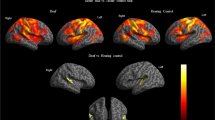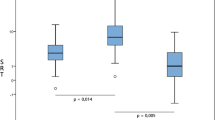Abstract
Purpose
Cochlear implant systems restore the sense of sound by stimulating auditory nerve fibers (ANFs) with surgically implanted electrodes. Neural activity elicited by electrical pulse-trains conveys sound information to the brain. Thus, it is important to understand how ANFs produce the temporal sequence of neural activity in response to sinusoidally amplitude-modulated (SAM) pulse-trains with a rate of 5,000 pulses/s. In this study, we evaluated the effects of axon diameter (1.2 to 4.6 μm) and the electrode-to-axon distance (0.525 to 1.00 mm) on the response to 100 Hz SAM pulse-trains using a computational ANF model.
Methods
The model uses a Hodgkin-Huxley computation that incorporates the kinetics of sodium and potassium channels and an adaptation component. Simulated responses were analyzed by computing vector strength (VS) and the amplitude of the fast Fourier transform component at the modulation component (F0 amplitude).
Results
Axon diameter significantly influenced neural responses to SAM pulse-train stimuli. As the axon diameter increased, the VS and F0 amplitude increased. However, the VS and F0 amplitude were less influenced by the electrode-to-axon distance.
Conclusions
Finally, we concluded that larger-diameter ANFs could more precisely convey temporal information of speech sound.
Similar content being viewed by others
References
Wilson BS, Finley CC, Lawson DT, Zerbi M. Temporal representations with cochlear implants. Am J Otolaryngol. 1997; 18(6 Suppl):30–4.
Rubinstein JT, Wilson BS, Finley CC, Abbas PJ. Pseudospontaneous activity: stochastic independence of auditory nerve fibers with electrical stimulation. Hear Res. 1999; 127(1–2):108–18.
Litvak LM, Delgutte B, Eddington DK. Improved temporal coding of sinusoids in electric stimulation of the auditory nerve using desynchronizing pulse trains. J Acoust Soc Am. 2003; 114(4 Pt 1):2079–98.
Runge-Samuelson CL, Abbas PJ, Rubinstein JT, Miller CA, Robinson BK. Response of the auditory nerve to sinusoidal electrical stimulation: effects of high-rate pulse trains. Hear Res. 2004; 194(1–2):1–13.
Hu N, Miller CA, Abbas PJ, Robinson BK, Woo J. Changes in auditory nerve responses across the duration of sinusoidally amplitude-modulated electric pulse-train stimuli. J Assoc Res Otolaryngol. 2010; 11(4):641–56.
Müller M, Robertson D. Relationship between tone burst discharge pattern and spontaneous firing rate of auditory nerve fibres in the guinea pig. Hear Res. 1991; 57(1):63–70.
Mino H, Rubinstein JT, Miller CA, Abbas PJ. Effects of electrode-to-fiber distance on temporal neural response with electrical stimulation. IEEE Trans Biomed Eng. 2004; 51(1):13–20.
Liberman MC. Single-neuron labeling in the cat auditory nerve. Science. 1982; 216(4551):1239–41.
Gleicher N, Confino E, Corfman R, Coulam C, DeCherney A, Haas G, Katz E, Robinson E, Tur-Kaspa I, Vermesh M. The multicentre transcervical balloon tuboplasty study: conclusions and comparison to alternative technologies. Hum Reprod. 1993; 8(8):1264–71.
Woo J, Miller CA, Abbas PJ. The dependence of auditory nerve rate adaptation on electric stimulus parameters, electrode position, and fiber diameter: a computer model study. J Assoc Res Otolaryngol. 2010; 11(2):283–96.
Woo J, Miller CA, Abbas PJ. Biophysical model of an auditory nerve fiber with a novel adaptation component. IEEE Trans Biomed Eng. 2009; 56(9):2177–80.
Arnesen AR, Osen KK. The cochlear nerve in the cat: topography, cochleotopy, and fiber spectrum. J Comp Neurol. 1978; 178(4):661–78.
Mino H, Rubinstein JT, White JA. Comparison of algorithms for the simulation of action potentials with stochastic sodium channels. Ann Biomed Eng. 2002; 30(4):578–87.
Schwarz JR, Eikhof G. Na currents and action potentials in rat myelinated nerve fibres at 20 and 37’ C. Pflugers Arch. 1987; 409(6):569–77.
Zhang F, Miller CA, Robinson BK, Abbas PJ, Hu N. Changes across time in spike rate and spike amplitude of auditory nerve fibers stimulated by electric pulse trains. J Assoc Res Otolaryngol. 2007; 8(3):356–72.
Miller CA, Hu N, Zhang F, Robinson BK, Abbas PJ. Changes across time in the temporal responses of auditory nerve fibers stimulated by electric pulse trains. J Assoc Res Otolaryngol. 2008; 9(1):122–37.
Goldberg JM, Brown PB. Response of binaural neurons of dog superior olivary complex to dichotic tonal stimuli: some physiological mechanisms of sound localization. J Neurophysiol. 1969; 32(4):613–36.
Sachs MB, Young ED. Encoding of steady-state vowels in the auditory nerve: representation in terms of discharge rate. J Acoust Soc Am. 1979; 66(2):470–9.
Kileny PR, Zwolan TA, Ashbaugh C. The influence of age at implantation on performance with a cochlear implant in children. Otol Neurotol. 2001; 22(1):42–6.
van den Honert C, Stypulkowski PH. Temporal response patterns of single auditory nerve fibers elicited by periodic electrical stimuli. Hear Res. 1987; 29(2–3):207–22.
Dynes SB, Delgutte B. Phase-locking of auditory-nerve discharges to sinusoidal electric stimulation of the cochlea. Hear Res. 1992; 58(1):79–90.
Ritchie JM, Rogart RB, Strichartz GR. A new method for labelling saxitoxin and its binding to non-myelinated fibres of the rabbit vagus, lobster walking leg, and garfish olfactory nerves. J Physiol. 1976; 261(2):477–94.
Neumcke B, Stampfli R. Sodium currents and sodium-current fluctuations in rat myelinated nerve fibres. J Physiol. 1982; 329(1):163–84.
Miller CA, Robinson BK, Woo J, Hu N, Abbas PJ. Physiological and anatomical changes in the auditory nerve fibers of chronically deaf cats; Conf Proc ARO Midwinter Meeting. 2010; 33(1):312.
Shepherd RK, Hardie NA, Baxi JH. Electrical stimulation of the auditory nerve: single neuron strength-duration functions in deafened animals. Ann Biomed Eng. 2001; 29(3):195–201.
Tasaki I. New Measurements of the Capacity and the Resistance of the Myelin Sheath and the Nodal Membrane of the Isolated Frog Nerve Fiber. American J Physiol. 1995; 181:639–50.
Ayat M, Teal P. Using Circuit Analogies for Analysis of Cochlear Models. Biomed Eng Lett. 2013; 3(4):263–72.
Kim HP, Han JH, Kwon SY, Lee SM, Kim DW, Hong SH, Kim IY, Kim SI. Sensitivity enhancement of speech perception in noise by sound training: Hearing loss simulation study. Biomed Eng Lett. 2011; 1(2):137–42.
Author information
Authors and Affiliations
Corresponding author
Rights and permissions
About this article
Cite this article
Yang, H., Woo, J. Effect of axon diameter and electrode position on responses to sinusoidally amplitude-modulated electric pulse-train stimuli. Biomed. Eng. Lett. 5, 124–130 (2015). https://doi.org/10.1007/s13534-015-0181-3
Received:
Revised:
Accepted:
Published:
Issue Date:
DOI: https://doi.org/10.1007/s13534-015-0181-3




